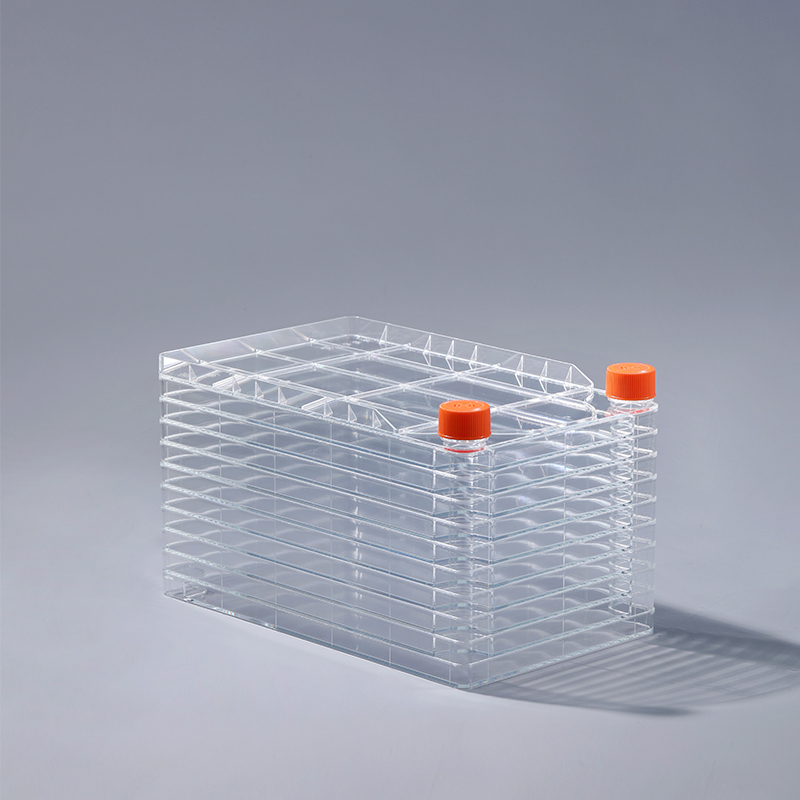은 세포 배양 장치로 배양 면적의 크기에 따라 하나 이상의 레이어로 구성되어 대규모 세포 배양을 실현할 수 있으며 백신, 제약 산업 등 많은 분야에 적합합니다. 또는 단량체 클론 항체. 세포 공장은 부착성 세포 배양을 만족시킬 수 있으며 현탁 세포의 정적 배양에도 적합합니다. 부착 배양은 세포가 배양될 때 배양(병) 용기의 벽에 부착되어야 함을 의미합니다. 세포가 부착되면 빠르게 퍼진 다음 유사분열을 시작하고 빠르게 대수 성장 단계에 진입합니다. 일반적으로 며칠 후 배양 표면이 덮이고 Vero 세포, HEK 293 세포, CAR-T 세포, MRC5, CEF 세포, 돼지 폐포 대식세포, 골수종 세포, DF-1 세포, ST 세포, PK15 세포, Marc145 세포 등은 모두 부착 배양 방식을 채택하고 있습니다.cell factory
현탁 배양은 지속적으로 교반하거나 흔드는 액체 배지에서 단일 세포 및 소세포 클러스터를 배양하는 조직 배양 시스템을 말합니다. 부유 세포의 성장은 지지체의 표면에 의존하지 않으며, 배양 배지에서 부유 상태로 성장합니다. 예를 들어, CHO 세포, 곤충 세포, BHK21 세포 및 MDCK 세포는 모두 현탁 배양에 사용됩니다.
세포 공장은 다층 구조와 넓은 면적의 장점을 활용하고 산업적 대량 생산에 널리 사용되어 부착 문화와 서스펜션 문화의 이중 요구 사항이며 많은 과학 연구 기관 및 제약 회사에서 선호합니다.
The cell factory utilizes the advantages of multi-layer structure and large area, and is widely used in industrial mass production to meet the dual needs of adherent culture and suspension culture, and is favored by many scientific research institutions and pharmaceutical companies.
The FAI climbed 5.9 percent year-on-year in the first 11 months of 2018, quickening from the 5.7-percent growth in Jan-Oct, the National Bureau of Statistics (NBS) said Friday in an online statement.
The key indicator of investment, dubbed a major growth driver, hit the bottom in August and has since started to rebound steadily.
In the face of emerging economic challenges home and abroad, China has stepped up efforts to stabilize investment, in particular rolling out measures to motivate private investors and channel funds into infrastructure.
Friday's data showed private investment, accounting for more than 60 percent of the total FAI, expanded by a brisk 8.7 percent.
NBS spokesperson Mao Shengyong said funds into weak economic links registered rapid increases as investment in environmental protection and agriculture jumped 42 percent and 12.5 percent respectively, much faster than the average.
In breakdown, investment in high-tech and equipment manufacturing remained vigorous with 16.1-percent and 11.6-percent increases respectively in the first 11 months. Infrastructure investment gained 3.7 percent, staying flat. Investment in property development rose 9.7 percent, also unchanged.
 English
English



















































